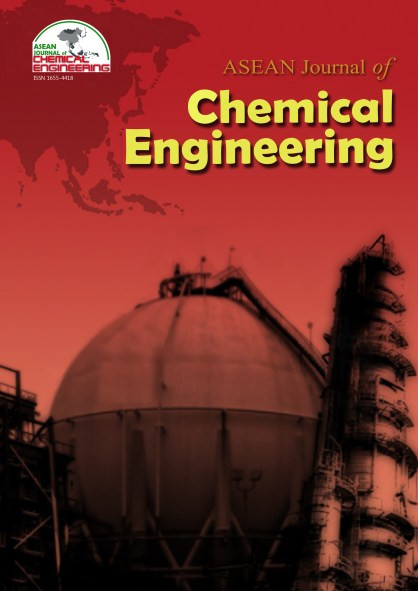Development of a Method through Digital Image Analysis for Analyzing Polyaniline Based Sensors for Total Volatile Basic Nitrogen (TVBN) as Fish Freshness Indicators
Abstract
Food spoilage is a prevailing issue to society. This study addresses it by developing a freshness indicator using polyaniline through digital image analysis that monitors the condition of fish, which release amine vapors upon spoilage. The Polyaniline film prepared is analyzed through its digital image captured by a smartphone camera. The images’ RGB values were measured through the use of ImageJ Software. The RGB values are dependent on the film’s color, which reflects the effect of trimethylamine exposure. This study includes film preparation, analysis of the film’s RGB values upon exposure to trimethylamine standard and headspace of a real sample, and the results’ comparison with the UV-Vis Spectrophotometry’s. Results are: Blue color value signal stability: 1.72% RSD, Repeatability test RSD: 35.68%, Blue value LOD: 0.01384M, Blue color value sensitivity: 248.87 color value change/molar concentration with linear coefficient of R²=0.97391. Spectrophotometry’s results were more accurate as expected. Nevertheless, determination through RGB values produced acceptable results. However, data acquisition for the ImageJ software application, the configuration of the optical system, and data treatment can still be improved. The method showed promising results for detecting volatile nitrogen samples such as amines in fish samples as they begin to spoil, using a smart phone.
References
2. Connell, J. J. Control of Fish Quality. (London, Fishing News Books, 1995) [Book]
3. Dhaouadi A., Monser, L., Sadok, S., & Adhoum, N. Validation of a Flow-Injection-Gas Diffusion Method for Total Volatile Basic Nitrogen Determination in Seafood Products. Food Chemistry, 103, 1049–1053 (2007)[Journal Article]
4. Kuswandi, B., Jayus, Restyana, A., Abdullah, L.Y., Heng, & Ahmad, M.. A Novel Colorimetric Food Package Label for Fish Spoilage based on Polyaniline Film. Food Control, 25, 184-189 (2012) [Journal Article]
5. Schneider, C. A., Rasband, W. S., Eliceiri, K. W. NIH Image to ImageJ: 25 years of image analysis, Nature methods, 9(7), 671-675 (2012) [Journal Article]
Copyright holder for articles is ASEAN Journal of Chemical Engineering. Articles published in ASEAN J. Chem. Eng. are distributed under a Creative Commons Attribution-NonCommercial 4.0 International (CC BY-NC 4.0) license.
Authors agree to transfer all copyright rights in and to the above work to the ASEAN Journal of Chemical Engineering Editorial Board so that the Editorial Board shall have the right to publish the work for non-profit use in any media or form. In return, authors retain: (1) all proprietary rights other than copyright; (2) re-use of all or part of the above paper in their other work; (3) right to reproduce or authorize others to reproduce the above paper for authors’ personal use or for company use if the source and the journal copyright notice is indicated, and if the reproduction is not made for the purpose of sale.



